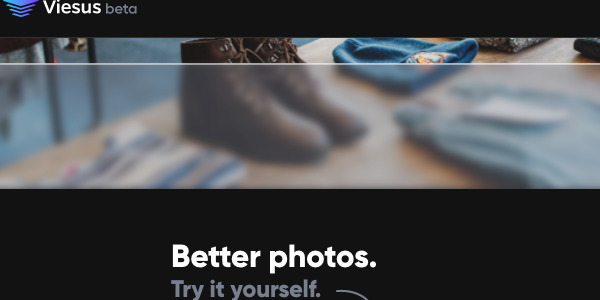Changelog
We continuously work on improving our services. On this page we give a brief overview of our changes.
Last updated: Aug 2, 2021
Aug 2, 2021
Node.JS SDK available
- Viesus 9 Library is now available for Node.JS
- Node.JS integration in Linux for an easy integration into node applications for an easy parallel execution of multiple images, that can be adjusted the utilize the full hardware and speedup the overall processing performance.
- High performance Node.js image enhancement, the fastest module to improve the quality of photos.
Viesus 9
Linux
Node.JS
Jun 5, 2021

Viesus Cloud 1.0
- Running Viesus 9 Library
- Drag and drop functionality
- Before and after toggle
- Feedback form
- 50 free enhancements
- Export to .zip or single JPEG or PNG
- Go to viesus.cloud
Viesus Cloud
Dec 1, 2020

Viesus 9
- Improvements have been made by implementing a new fast and reliable face detection multi-staged network. In addition to that, the eye detection performance for the red eye correction improved by the integration of facial landmarking network. That gives us results with increased reliability of the face detection and facial landmark results (eye position) that is used to dramatically reduce the red eye false positives rate outside of faces.
- Furthermore, the new results are used for newly added skin tone adjustment feature (“Natural Skin Enhancement”) that allows an automated de-saturation of oversaturated faces.
- White point adjustment for digital printing. Light grey is transformed to white to reduce grey patterns.
library
Jan 1, 2015
Viesus 8.5
- Improvements have be made to reduce false corrections during the redeye reduction processing step, especially on larger false corrections around eye and nose regions in faces.
- Furthermore, a new parameter entry was added to allow the addition of grain (artificial luminance noise). This can be used to reduce color banding/polarization artifacts.
library
Jan 1, 2013
Viesus 8
- The global color and brightness correction has an increased stability, which will lead to more similar results for similar images. Occasionally, the correction will be somewhat different to the previous version, but for most images, the correction remains the same. Occasional over-corrections of images with tungsten-type (yellowish) color cast have been reduced
- The redeye correction algorithm has been improved; in particular, the false positive rate has been considerably reduced, especially for large false positives. With the same default parameter, detection rate will be comparable to the previous version, but with clearly less false positives. Furthermore, the behavior of the redeye strength parameter has been made more smooth, meaning that detection and false positive rates will vary more continuously with the strength parameter.
- The ICC-profile handling is based on a more recent color management library (LittleCMS 2.4, which is fully compliant with ICC specification 4.3).
- The possibility to convert enhanced or non-enhanced images to neutral or toned (sepia-like) mono-chrome images has been introduced (for library or semi-automatic application).
- The possibility to select the processing order of resampling and enhancement has been introduced - although the default processing sequence remains the same, that is, if activated, resampling is done after the enhancement.
- In cases where a non-sRGB input image is processed and a (non-sRGB) output ICC profile has been selected, the processing will take into account resp. compensate errors generated by the successive conversion to sRGB (done for the analysis) and the 2nd conversion from sRGB to the output ICC-profile. This means that (in addition to the actual enhancement of the image), image data will be processed in a way corresponding to the direct transform from input to output ICC profile, without conversion artifacts caused by the intermediate sRGB. (However, processing time and internal memory requirement will be higher in these cases). This allows a more correct data handling e.g. in situations where for instance AdobeRGB images have to be enhanced and saved again in AdobeRGB color space.
library
Jan 1, 2012
Viesus 7.5
- CMYK and Grayscale images can also be processed (previously only RGB)
- Alpha-channel data are read to improve enhancement results
- Code size reduction for smaller footprint of installation
- Better handling of corrupt image data, special ICC profiles
- New license management system
- FolderEnhancer
library
Jul 1, 2010
Viesus 7
- Improved global & local color correction
- Global brightness correction
- ICC profile handling
- Noise reduction
- Improved enhancement for underexposed photos
library